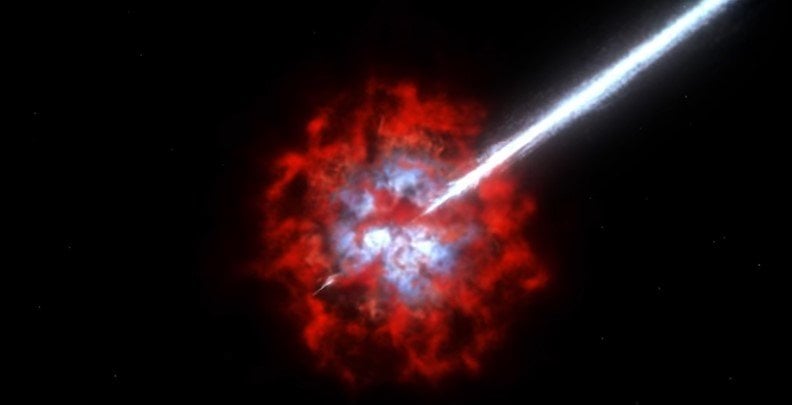We don’t have to stray far into deep space to discover wonders; our galaxy, the Milky Way, is full of beautiful sights which can be seen easily using a telescope. One such wonder is a huge star system which astronomers believe could explode, causing a massive gamma-ray burst which may harm Earth.
Researchers from the University of Sydney teamed up with scientists around the globe. They discovered a huge star system in our galaxy which has not been observed previously. One of the stars in the system is 8,000 light-years away from Earth, and it’s the first known star which could produce a gamma-ray burst — one of the largest types of energy releases in the universe. These bursts are similar to supernovae, which occur when stars explode and die.
The newly-discovered star system consists of two very bright stars, and the team has dubbed it “Apep,” after the Egyptian god of chaos. The study on the start system, which was published in the journal Nature Astronomy, suggests one of the stars in the system is on the brink of a supernova. What makes this study unique is that scientists aren’t sure how a gamma-ray burst would look in the Milky Way, as one hasn’t been observed before.
The stars are in a beautiful combination of dust and gas. Based on their research at the Sydney Institute for Astronomy, the scientists say the binary pair orbits each other every hundred years. The orbiting of the huge star system stands out amid a fast wind streaming off the stars. Scientists used spectroscopy to determine the velocity of the stellar winds, which turned out to be 12 million kilometers per hour, or 1% of the speed of light.
Lead author Dr. Joe Callingham, who is now at the Netherlands Institute for Radio Astronomy, said in a statement, “We discovered this star as an outlier in a survey with a radio telescope operated by the University of Sydney. We knew immediately we had found something quite exceptional: the luminosity across the spectrum from the radio to the infrared was off the charts.”
“When we saw the spiral dust tail we immediately knew we were dealing with a rare and special kind of nebula called a pinwheel,” University of Sydney research group leader Peter Tuthill added. “The curved tail is formed by the orbiting binary stars at the centre, which inject dust into the expanding wind creating a pattern like a rotating lawn sprinkler. Because the wind expands so much, it inflates the tiny coils of dust revealing the physics of the stars at the heart of the system.”
However, the team was surprised by the data they captured.
“It was just astonishing,” Professor Tuthill said. “It was like finding a feather caught in a hurricane just drifting along at walking pace.”
The team thinks when the huge star system explodes in a supernova, it could produce a massive gamma-ray burst, which is the second most extreme type of event in the universe, after the so-called “Big Bang,” which scientists believe set the universe into motion and is still causing it to expand even today.
“Ultimately, we can’t be certain what the future has in store for Apep,” Tuthill said. “The system might slow down enough so it explodes as a normal supernova rather than a gamma-ray burst. However, in the meantime, it is providing astronomers a ringside seat into beautiful and dangerous physics that we have not seen before in our galaxy.”





